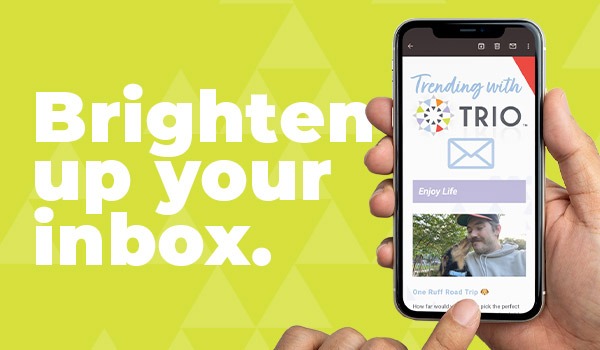When Labels are Actually a Good Thing
I’m probably one of the few members of my Millennial generation who likes labels. Not only do labels let me know who is going to be my new best friend (label to look for: HARRY POTTER FAN) or who I should sit next to during football season (label to look for: CLEMSON, label to avoid: USC), but labels help make my job as a writer a whole lot easier — especially when I’m working on an email campaign.
In short, labels allow me to better understand who I’m talking to and thus create a message that is more personalized to each individual recipient of the email campaign I’m sending out.
Why is your email not performing well?

Imagine that you put all of this time into the perfect email. You’ve spent hours making sure the message is written just right, the images are pristine and the subject line is engaging. You hit ‘send,’ only to discover a couple days later that only three people opened it. You’re completely crushed.
Unfortunately, this is a common problem that businesses encounter. And the reason for it is because email is no longer a one-size-fits-all medium. At least, it shouldn’t be. If you’re still sending the same exact message to every single person in your email contacts, chances are you aren’t seeing a lot of benefit in your email marketing.
However, there is a way to fix it. Most email marketing platforms (i.e. MailChimp, Constant Contact, etc.) have the capability of labeling your list of contacts according to different categories in order to further personalize the messages you are sending out. This is known in the marketing world as “segmenting.”
Why you should segment your emails
You can segment your email contacts based on their demographics, location, engagement status with your previous emails, buying history…the list goes on and on. While it may take some extra time in the beginning to segment your contacts, in the end, it can make a world of difference.
In fact, one study found that segmented email campaigns had a 14.31 percent higher open rate and a 100.95 percent higher click-through rate compared to email campaigns that weren’t segmented. After all, wouldn’t you be more likely to open an email that was written specifically for you?
Why your customer prefers segmented emails
![]()
According to a recent study, 80 percent of people exclusively access their emails from their phones. Pair that with our society’s increasingly short attention spans, and you’ve got a very small window (literally and figuratively) to capture their attention.
Additionally, most people are conditioned to delete “junk emails” without a second thought and swiping on your phone just makes it even easier to do so. That’s why it is so critical for businesses looking to connect through email to build trust with their audience through customized emails. The more your audience comes to expect a personalized experience from you, the more likely they will be to engage with your emails.
How to set up a solid email segmentation campaign
When setting up your email segmentation for a specific campaign, you want to always keep your goal in mind. This will influence the characteristics you want to use in your segmentation, the number of emails you want to send and whether or not your email campaign was successful.
Here is an example scenario of a solid segmented email campaign:
Imagine that you are a retailer who is seeking to increase your sales of men’s running shoes by 20 percent. That goal alone is going to narrow down the focus of your campaign.
Based on your goal, you segment your list by gender (label: MALE) and send out an initial awareness email of all the men’s running shoes you have on your e-commerce website.
Then, based off of the analytics you receive from that initial email, you set up a follow-up email to those who didn’t open it (label: DIDN’T OPEN), reminding them of the deals that are just a click away.
For those who did open it but didn’t purchase anything (label: CLICKED THROUGH), you send a follow-up email with language specific to the products they looked at on your website.
For those who opened it and made a purchase through your website (label: PURCHASED), you send an email thanking them for their recent purchase and offering them a discount on their next purchase.
![]()
As you can see from this example, by segmenting your email list you are able to narrow your focus for each email, creating a more customized message based on where each person is in the sales process.
A customized approach like this has been shown to increase sales and engagement levels with customers. It also allows you to send fewer, more relevant emails, increases the value of your message and decreases the risk of your email being deleted.
Interested in reaching your customers with messages that speak to them on a more personalized level? Learn how our team at TRIO handles email segmentation and recommend it for all of our clients.
Keep reading...
TRIO Reflections: Digital Summit Charlotte
As TRIO’s resident content and SEO strategist, I am always looking for opportunities that will help expand my knowledge base and strengthen my skill set to better […]

TRIO’s Tips for Inspiration
Monday morning blues, writer’s block, the 3 p.m. slump, whatever you want to call it, we’ve all experienced some form of brain fog at some point during […]

